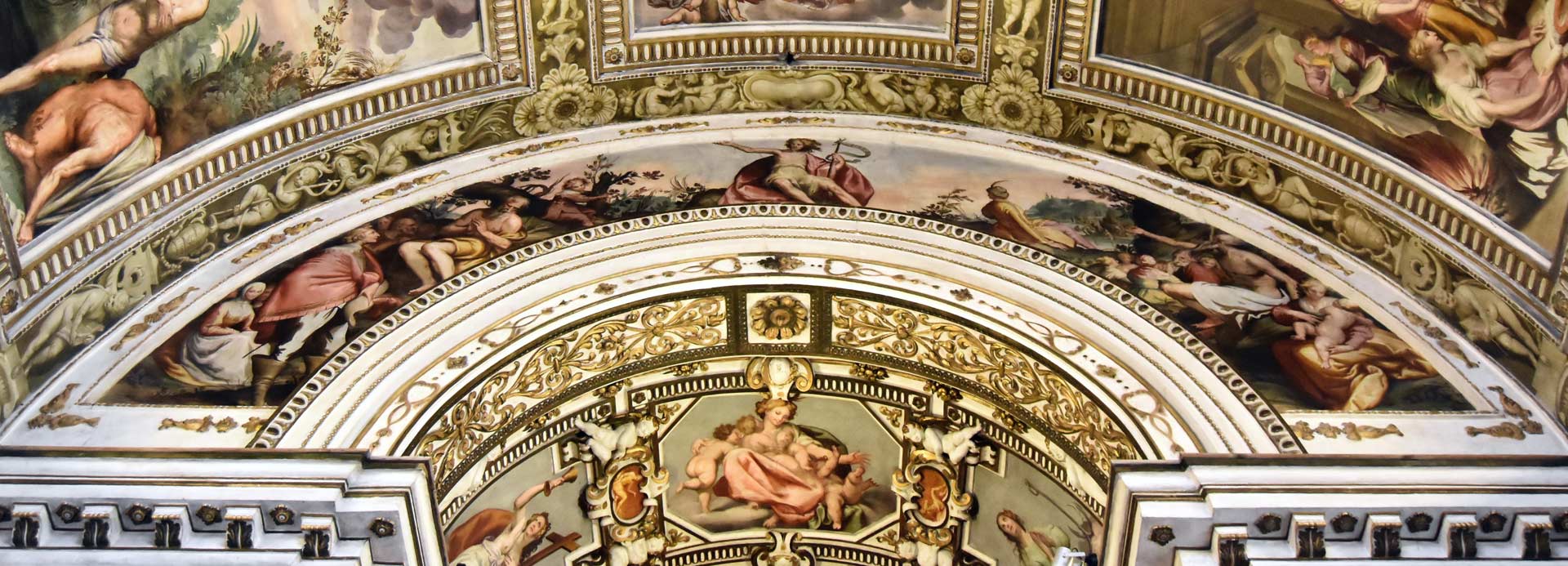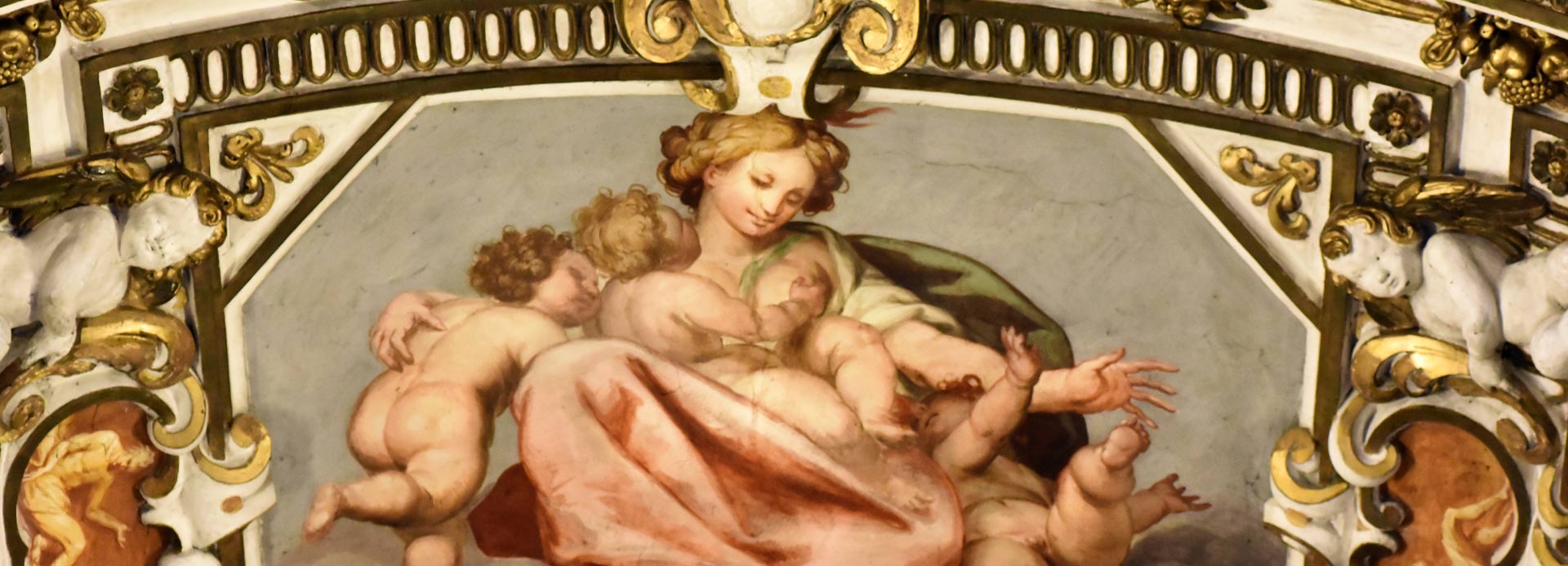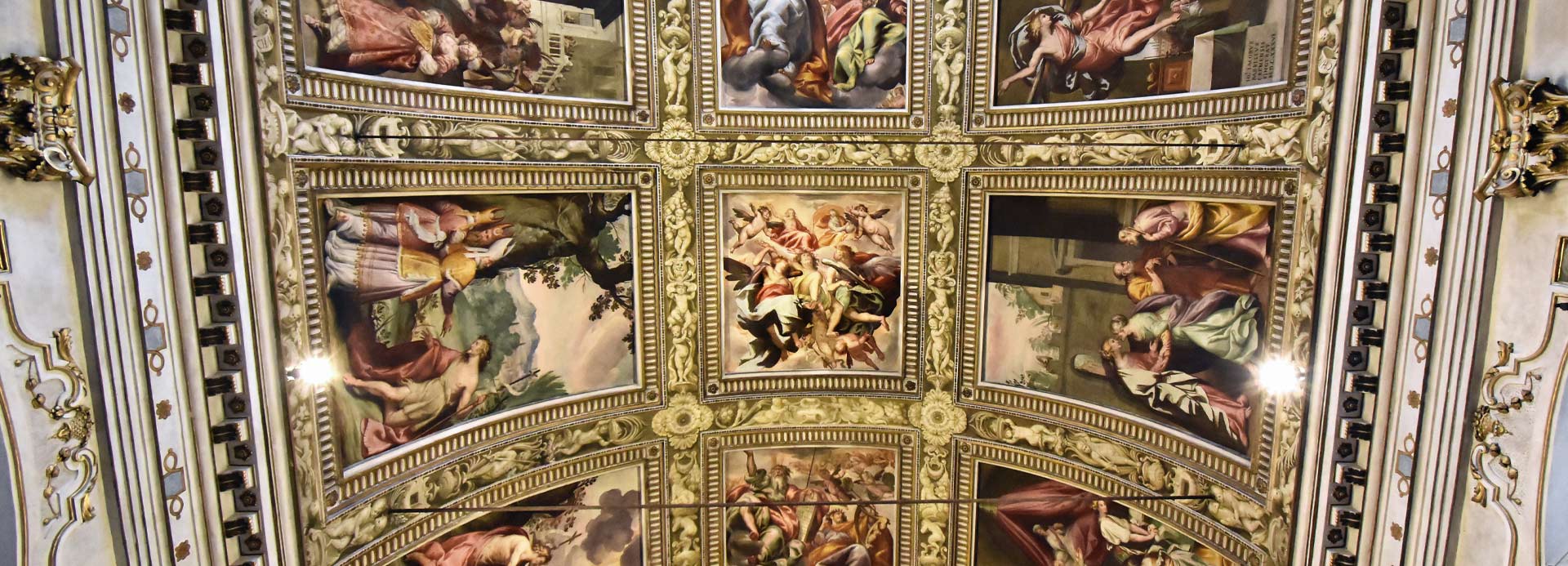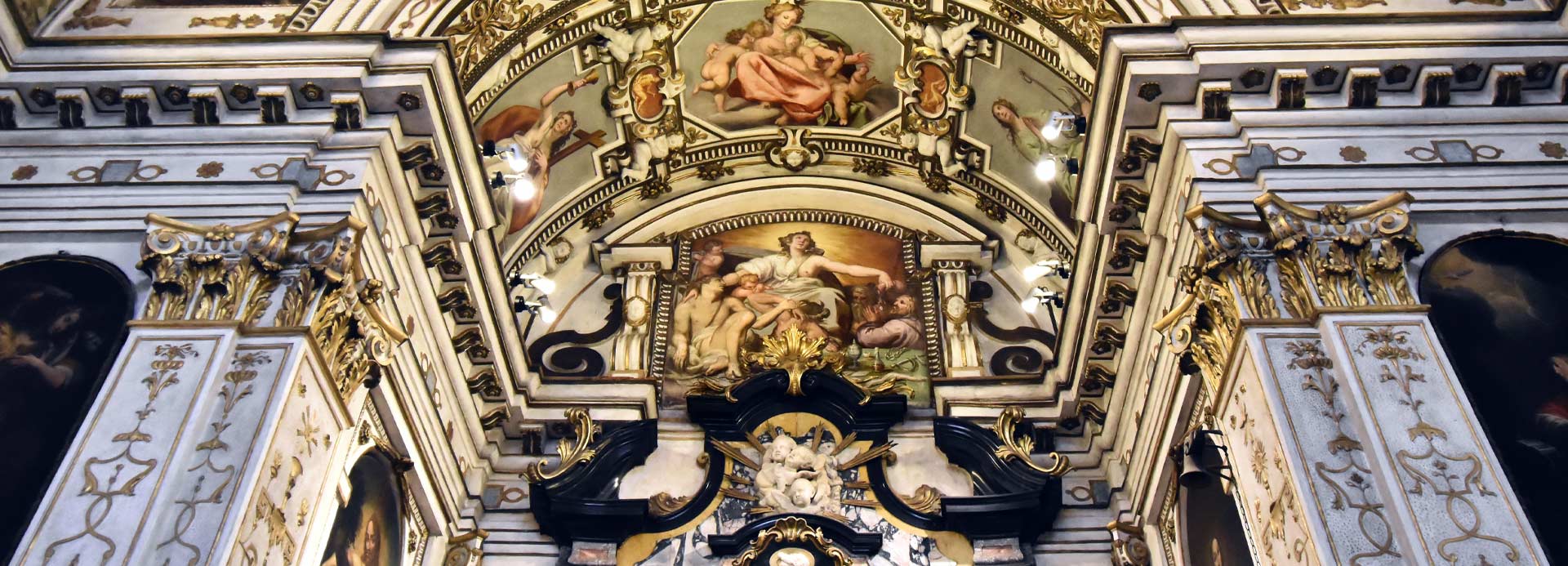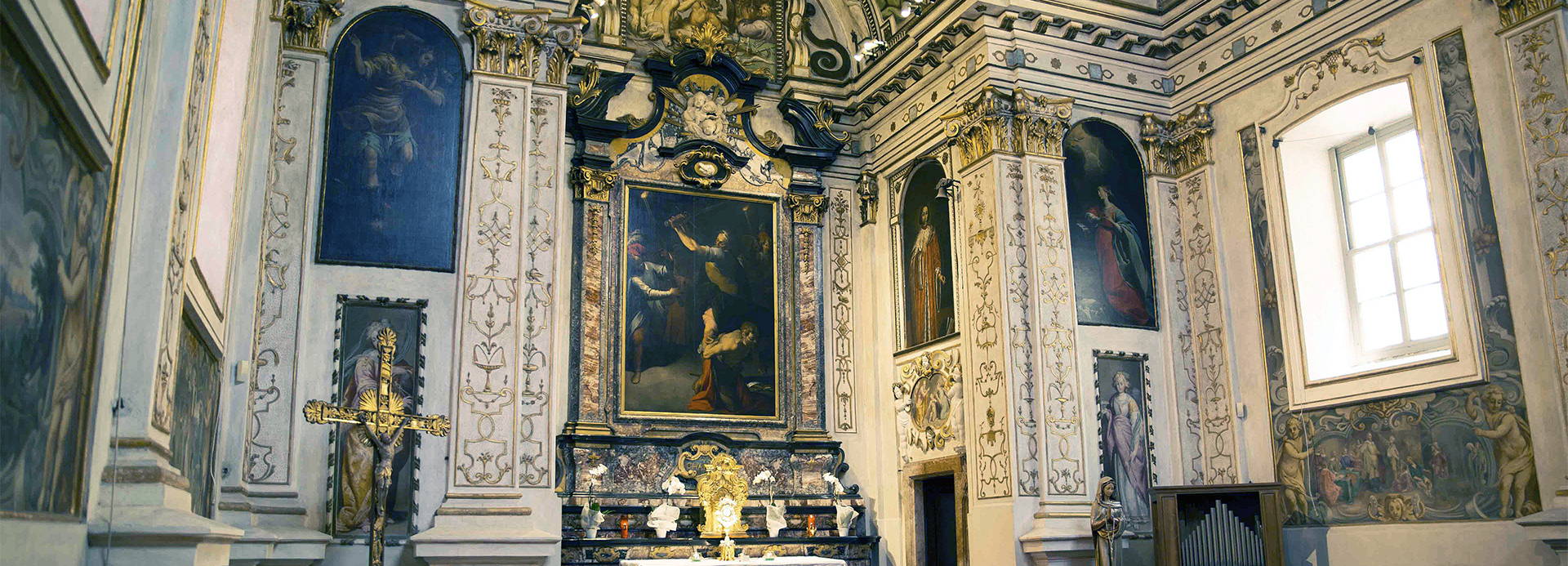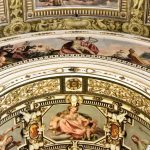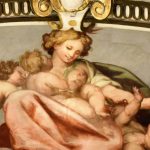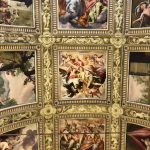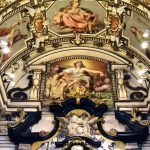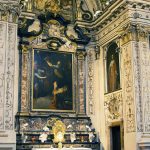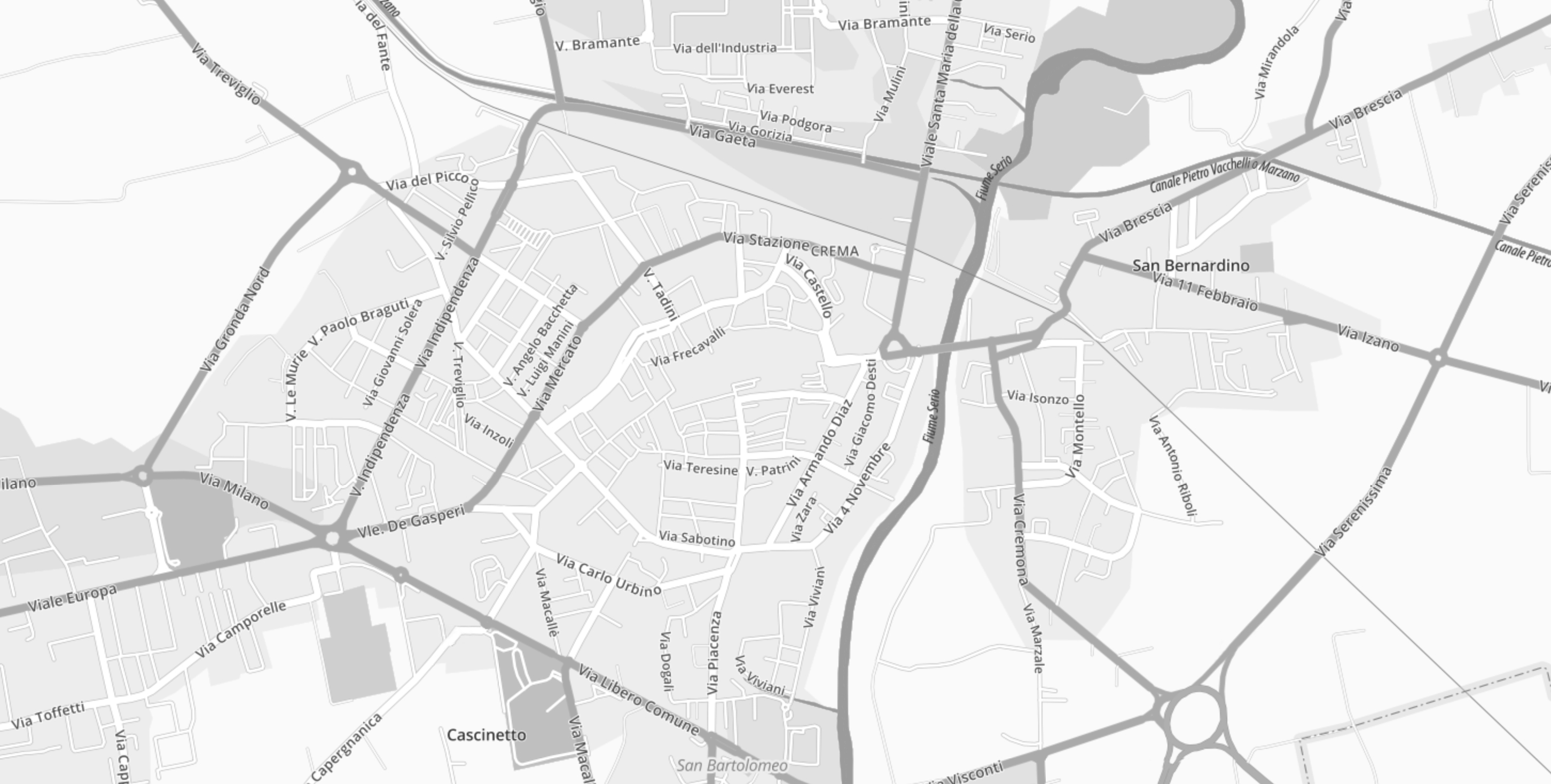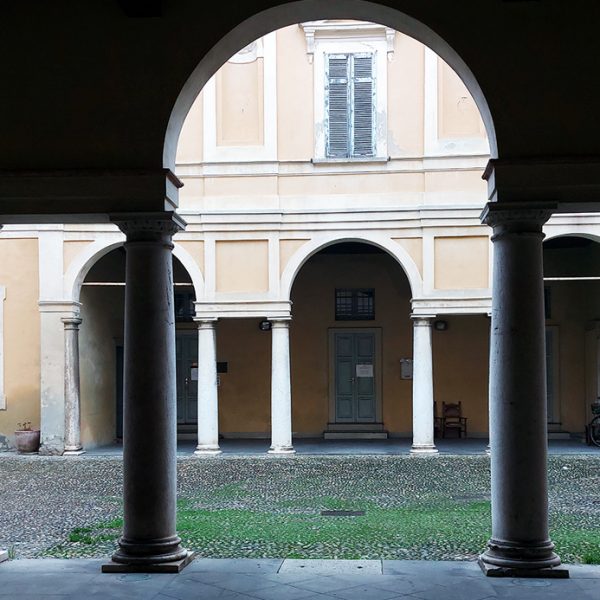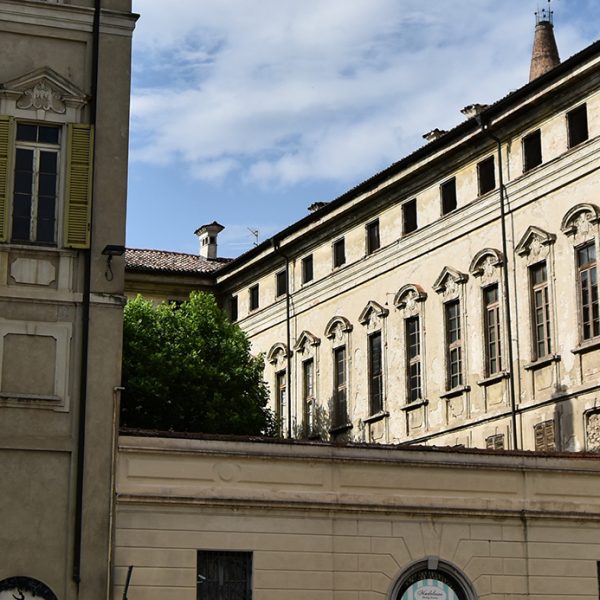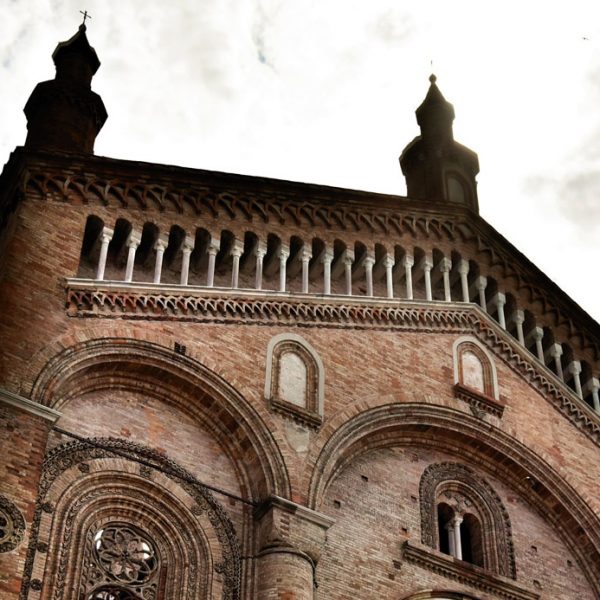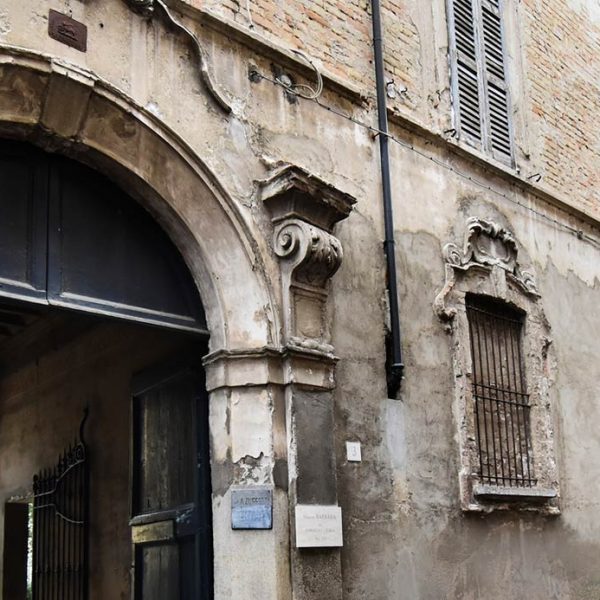 Tutti i luoghi
Tutti i luoghi
Built in a place of symbolic importance
This small building was built according to designs by Evangelista degli Alessandri at the end of the 16th century commissioned and built by the brotherhood of the charitable association, Compagnia della Carità, which needed its own meeting place, hence the motto, “CHARITAS”, placed above the entrance. The chapel was dedicated to Saint John the Baptist who was the patron saint of the brotherhood.
The chapel was built in a place of symbolic importance for the town of Crema, as legend has it that the house of Caterina degli Uberti once stood here. Caterina degli Uberti was a young woman who had a vision when the Madonna appeared to her in April 1490 and the Basilica di Santa Maria della Croce, or the Church of Saint Mary and the Cross, was built to honour the event.
The building of the chapel began on 23rd May 1583 and was finished in 1599. It was not until 1636 that Gian Giacomo Barbelli frescoed the walls of the church.
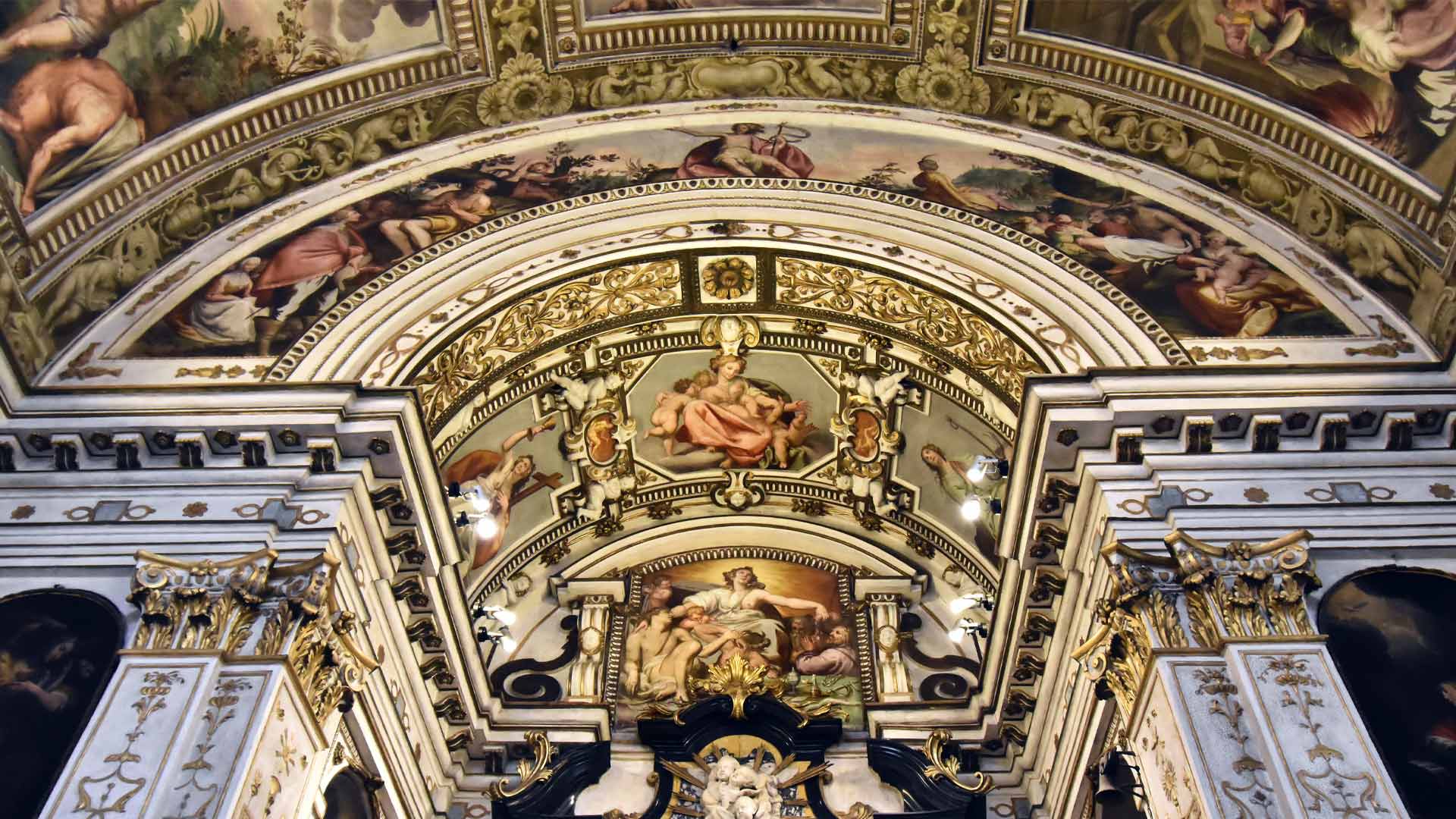
During the 17th century the brotherhood went through a difficult economic period and had to remedy this with the institution of a minister, who could keep the books and re-establish order to their accounts. However, the brotherhood was suppressed in 1810 in the Napoleonic era and the chapel became a subsidiary of the San Giacomo church.
The chapel facade appears quite simple squeezed in between its neighbouring buildings. Its area is defined by two pillars, which rise from the ground to the full height of the building and end in Corinthian capitals. The marble doorway is crowned by a triangular tympanum decorated with a cartouche inscribed with the motto of the brotherhood, “Charitas” .
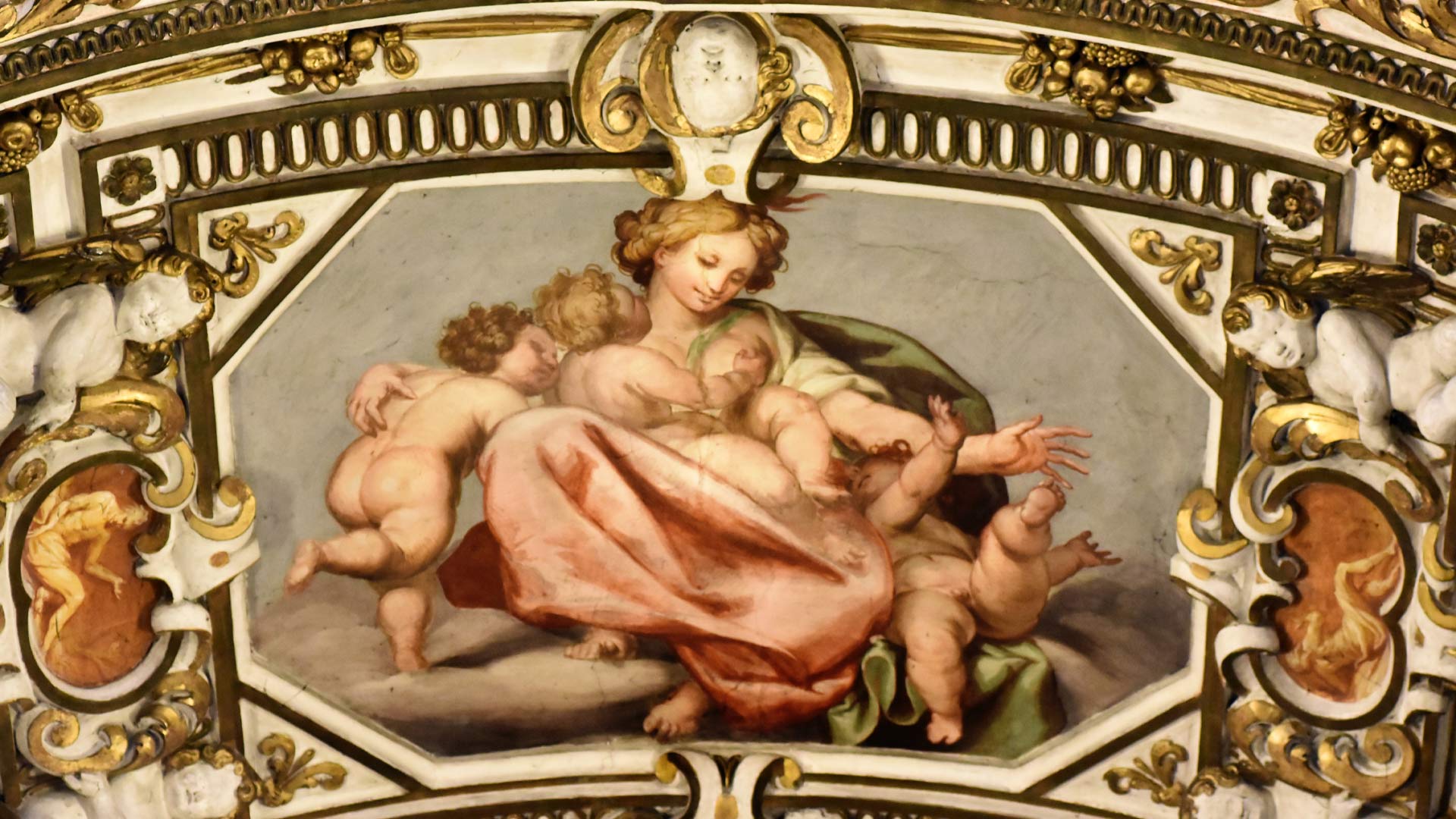
The entrance also has a large rectangular window above it. The interior of the chapel is a real treasure trove of 17th century paintings in Crema. There is a single nave with a barrel vaulted ceiling and columns at regular intervals with Corinthian capitals ending in the presbytery, which also has a barrel vaulted ceiling.
The walls are entirely decorated and frescoed by the Crema painter Gian Giacomo Barbelli (1604-1656). The artist left his signature and the date, 1636, in the painting of the Annuncio dell’Angelo a Zaccaria, (the Apparition of the Angel to Zaccariah). The paintings are divided into scenes, and each one sits in a frame of stucco embellished with candelabras and cherubs. The oldest frescoes, the allegorical figures of Faith, Hope and Charity, are found inside the Presbytery. The ceiling is divided into three paintings representing Saint Peter and Saint Paul, the Apotheosis of the Baptist, and the Prophet Moses with King David.
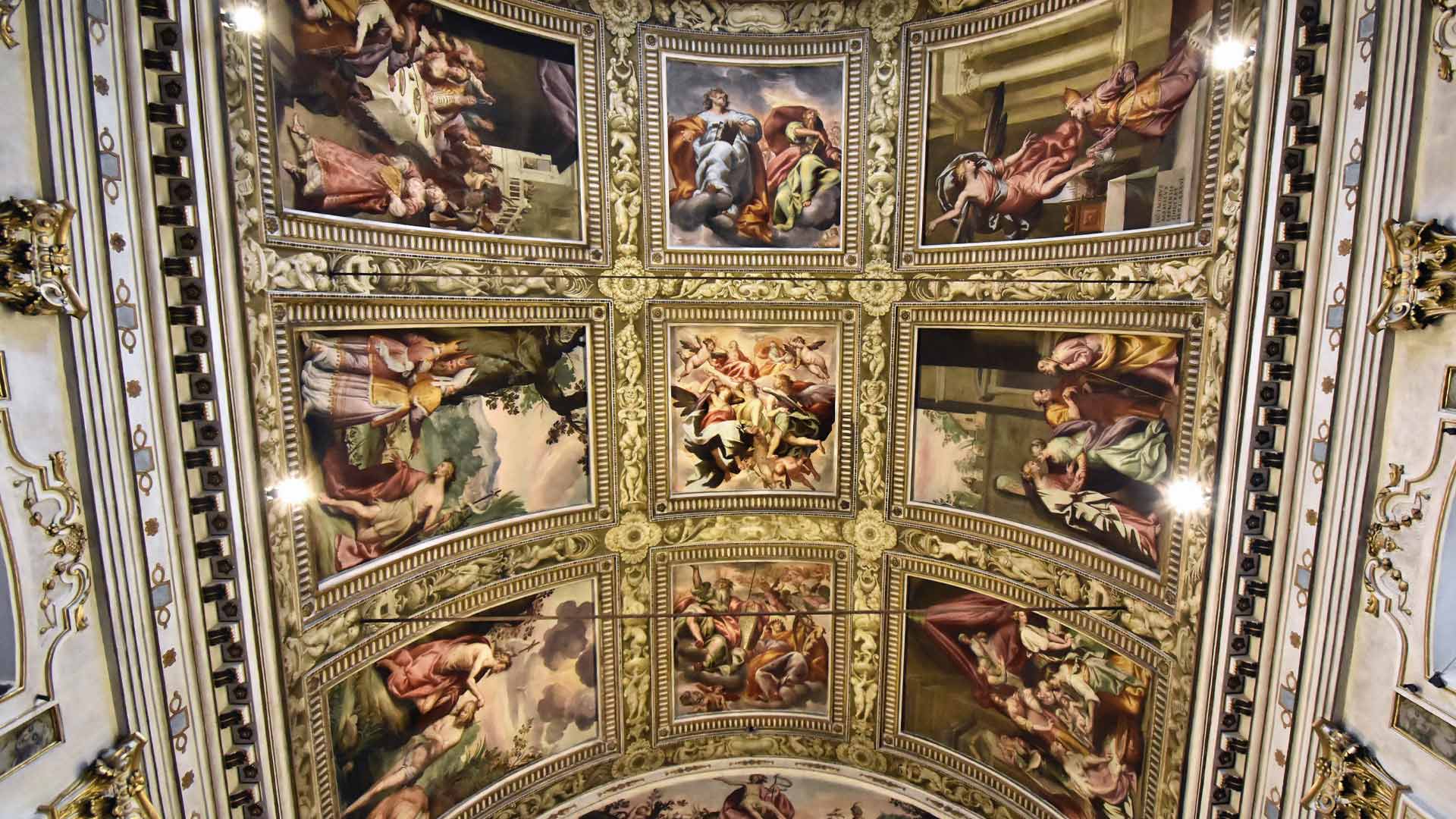
The side walls are organised on two levels. On the upper level we have scenes from the life of Saint John the Baptist, while the lower level is dedicated to scenes of works of charity.
As you enter the chapel on the left you will see the Apparition of the Angel to Zachariah and the Birth of John the Baptist, while on the right, you can find the Baptism of Christ, the Visit of the Priests at the Baptism and Herod’s Banquet and the Dance of Salome. Finally on the triumphal arch we have John the Baptist preaching, which chronologically links the stories on the two sidewalls. In this scene, a self-portrait of the artist can be recognised in the figure with the red cloak and 17th century clothes, with his wife depicted as the woman sitting behind him. On the side of the presbytery arch there are two paintings, the Announcing Angel and the Virgin with Saints Apollonia and Lucy. On the other side, the artist painted Jeremiah and Elias with references to the life of John the Baptist.
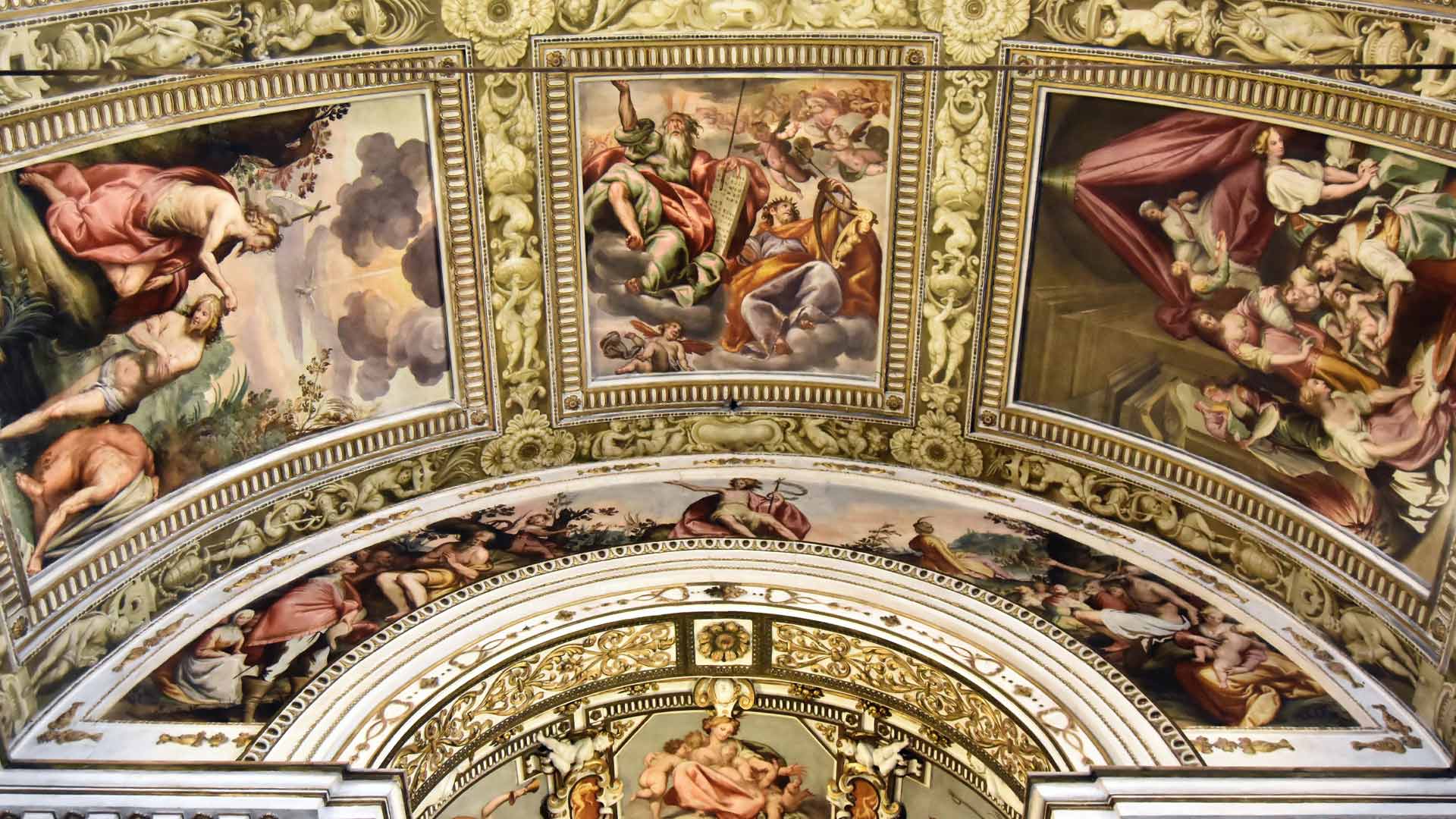
The altarpiece displays a representation of the Desolation of John the Baptist, which is the only painting not executed by Barbelli, however, the artist is unknown. Some have attributed the painting to Antonio Campi from Cremona, but a more likely contender is Camillo Procaccini from Milan.
On the floor in front of the presbytery you can still see the 17th century tombstone of Filippo Farra, who was one of the founding members of the brotherhood of the Compagnia di Carità. And last but not least is the marble altar below the altarpiece, which is of remarkable beauty. It is crowned by a tympanum with a bass relief featuring the head of John the Baptist on a plate with the Lamb.
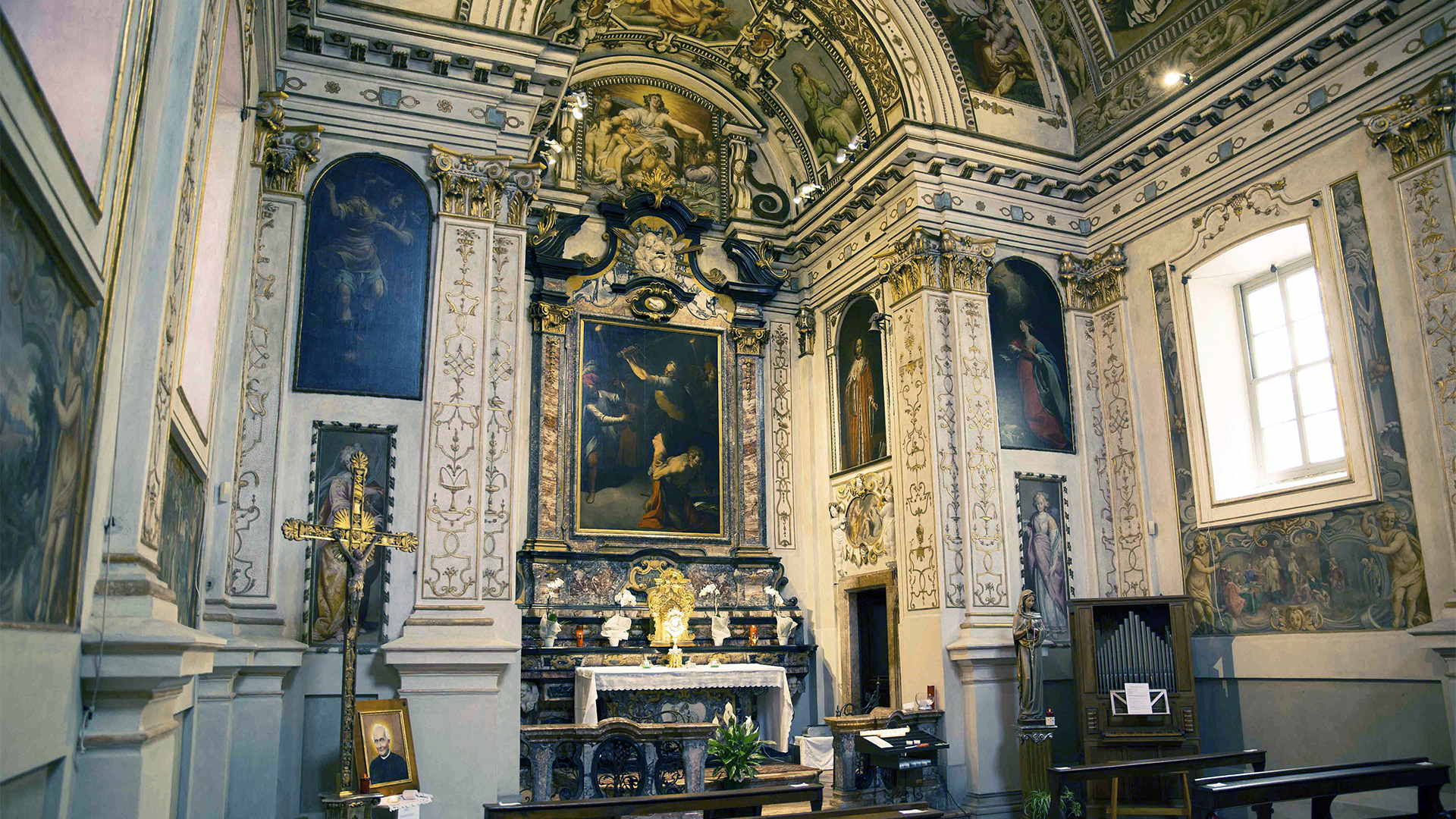
Info
Via Matteotti, 37
Hours subject to restrictions
Visits prohibited during religious celebretions

